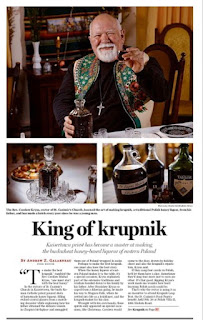A Garden Hymnal VID 6
My parents, while not
professional musicians, loved to sing. Singing was our family’s soul, as daily ditties
and most especially at festive table fellowship. Dad sang tenor in the WWII
Army Chorus and our extremely professional parish choir. Mama sang all over the
home, basement, and yard, so much so that in her last nine years as a resident
of a health care facility she was dubbed, “Singing Sophie.”
School years expanded the
girth of our domestic hymnal with multi-lingual liturgical and devotional lyrics flowing from my
parent’s experience. Panis Angelicus, the Gregorian Kyries, Sanctus’ and Agnus
Dei formed the core. The Ave Maria was
never overlooked.
Treasures of this ethnic
heritage family/church hymnal, wove their way through pages and seasons. A closer examination showed the collection to
be a floral hymnal. Many, almost every
month, celebrated floral poetry and its spiritual symbolism.
Among the most unique
examples is
a carol, “Hay of the Meadow” (Śliczna Panienka) calling Jesus the
“flower of Nazareth” which when “cast into the hay as a celestial star, it did not consume the
hay of his manger.” The meditative
lullaby carol reflects on Jesus as the eternal Word which spoke to Moses out of
Exodus’ burning bush.” Such exquisite
fuel for meditation.
An Easter Resurrection procession anthem
proclaims the victorious Lord rising as a beauteous flower, “Christ the Lord” (Wesoły
nam dzieň dziś nastał). I could not
help relating this verse to the fragrant blooms of Easter lilies comprising a
central focus of the devotional depiction of the Lord’s now empty Garden Tomb.
Through Good Friday evening and Holy Saturday, we prayed and lit candles at Christ’s rock hewn tomb surrounded by
plots of hope, springtime rebirth; namely:
multicolor hyacinths, rhododendron,
crocuses, pussy willow, palm trees, ivy, tulips, daffodils, and narcissuses.
May brought full-bloomed
meadows, floral
beds, and fields to
the Crown of all God’s Handiwork and Queen of all Creation, Mama Mary (“All
Creation Bless” or Chwalcie Łąki).
This included greenery of fragrant, herbal grasses, sweet flag reeds,
birch and chestnut/linden branches.
The lyrics of “O Sing to
the Queen of the Heavens” remind her devotees to “take roses and weave her a crown” (Królowej
Anielskiej śpiewajmy). These words also extoll Mama Mary as “a lily arrayed in splendor.”
Another celebrates Our Lady the “most fragrant of all flowers, the splendid
lily.” Lilies and roses as flowers of
exquisite beauty, fragrance, and cost form the most extensive poetic
reflections on Mary’s esteemed spiritual person. One cannot help but recall the
lyrical fragrance in the Rosary Hymn “Take our hopes and tie them up as roses.”
This same composition (Zawitaj Królowo Różańca
Świętego) captures the Lady’s supernatural virtue as “the stainless and
blissful lily of Paradise.” A unique Rosary verse in “Mary we greet you,”
refers to Mama Mary as the “cedar of purity” (Zawitaj Matko Różańca Świętego),
an allusion to the fragrant and towering biblical cedars of Lebanon.
Although not flora of the
earth, however,
their celestial counterparts, the stars of heaven reflect and radiate God’s
favor and grace. Drawing from Biblical reflection of the Book of Revelations,
Mama Mary appears crowned with stars (Rv 12:1) or as the “resplendent star”
welcoming her pilgriming children in the Black Madonna hymn (Gwiazdo Śliczna). As Star of the Sea in Ta Której berła,
Mary is feted as a powerful woman ruling over governments, land and sea.
Reaching out to the
stars, the hymnal refers to choirs of birds and mourning doves, earthly counterparts of the
seraphim. The latter flying choir lauds Our Lady in the Black Madonna hymn “Star
Resplendant”. Winged creatures form a
four-voice choir
caroling for the Newborn. Chirping nightingales, blue jays,
father-and-son magpies, with a “collegiate cheer” sparrow wondrously resound through this carol’s
onomatopoeic aviary verses. Cranes
and roosters,
at dawn, call
humans to the stable. After all, what is a garden without feathered friends?!
The above poetic excursion into song moves
emotions of the heart, calling forth passionate encounter, and loving
commitment. This garden hymnal is a
liberating escape from idea music, exaggerated lilt, piano lounge accompaniment,
and behavioral exhortation. It balances
sometimes trite, conceptual happiness themes with a spiritual realism from the
fruitful soil which celebrates natural beauty and welcomes all to experience
the splendor of God.
Next Saturday: Beads:
Action Prayer Tools of Heaven Door spirituality
Next Saturday: Heaven Door Tool: Beads
_________________________________
All video and textual
content of St Casimir’s Series on the Domestic Church and Tandem Blog Articles
© CzMKrysa, Buffalo, NY April-May 2020




Comments
Post a Comment